If the electric-vehicle revolution is anything like the Lotus Emeya, we needn't be so worried
The new 'hyper GT' from Lotus is as good an effort at an exciting EV that can currently be found on British roads.
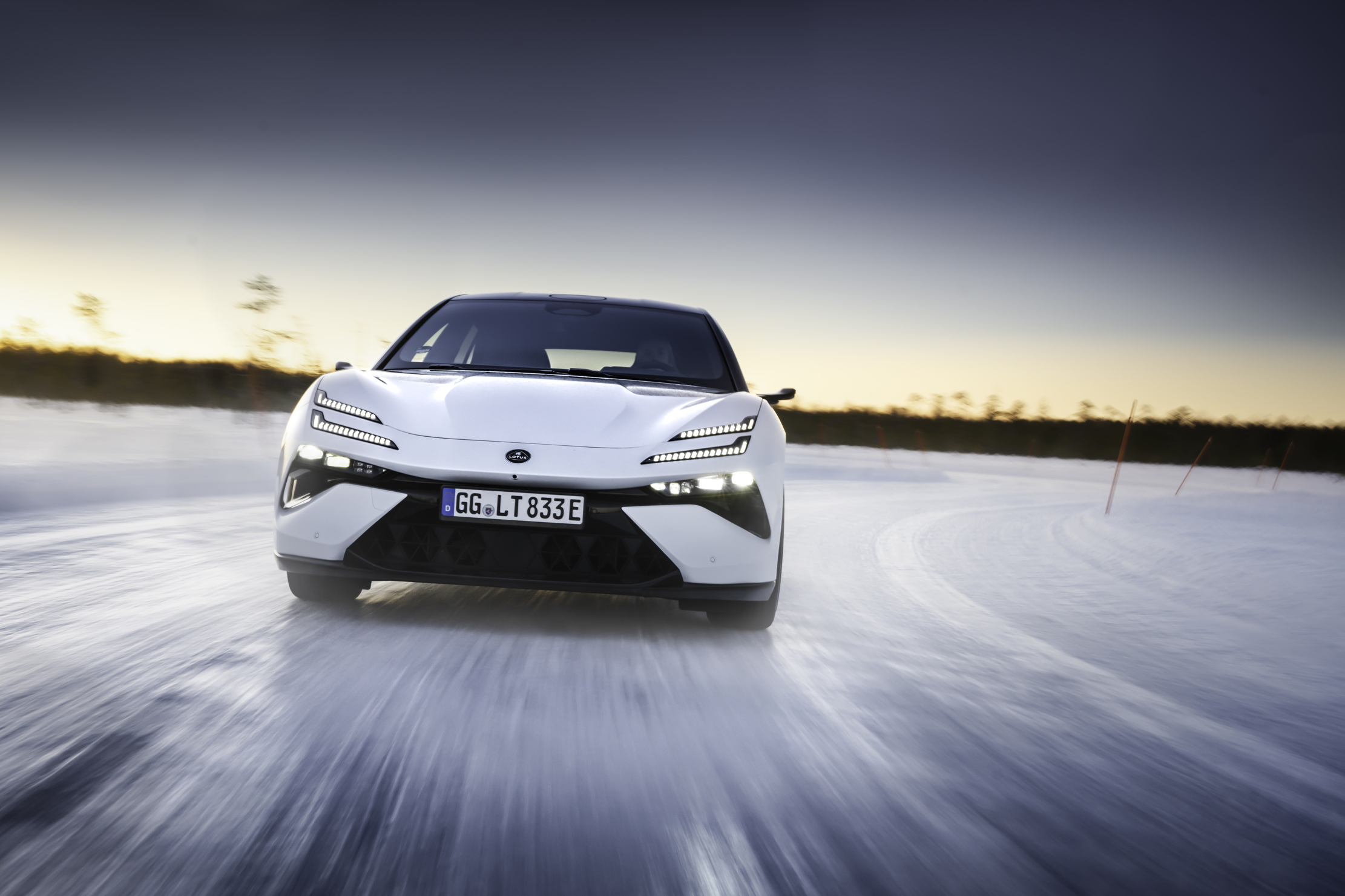

The times, they are a-changing, and perhaps nowhere have they changed more than in Hethel, Norfolk. For that is where Colin Chapman used to make small petrol-powered sports cars under the Lotus brand, and it is where Geely now makes larger electric-powered sports cars under the Lotus brand.
Much has been written about the legacy of Lotus. How would Mr Chapman feel about the direction the company has been taken? Those of a more traditional sense would argue that the essence of Lotus has been lost, that Chapman would be spinning in his grave so much that you could feasibly use him as a generator to power the new range of electric cars.
Other, less dull types, such as myself do not mind so much. As much as Lotus has been about small sporty things, so too has it been about innovation: carbon fibre, wings, twin chassis, torsion suspension, to name a few. Innovation bred success. Small sporty internal combustion cars are not the future. They are not legally allowed to be. Electric Lotus is just the next step of that legacy of innovation. Besides, the firm still makes the small and sporty and petrol-engined Emira, and the preposterously fast and electric Evija. You can teach an old dog new tricks.
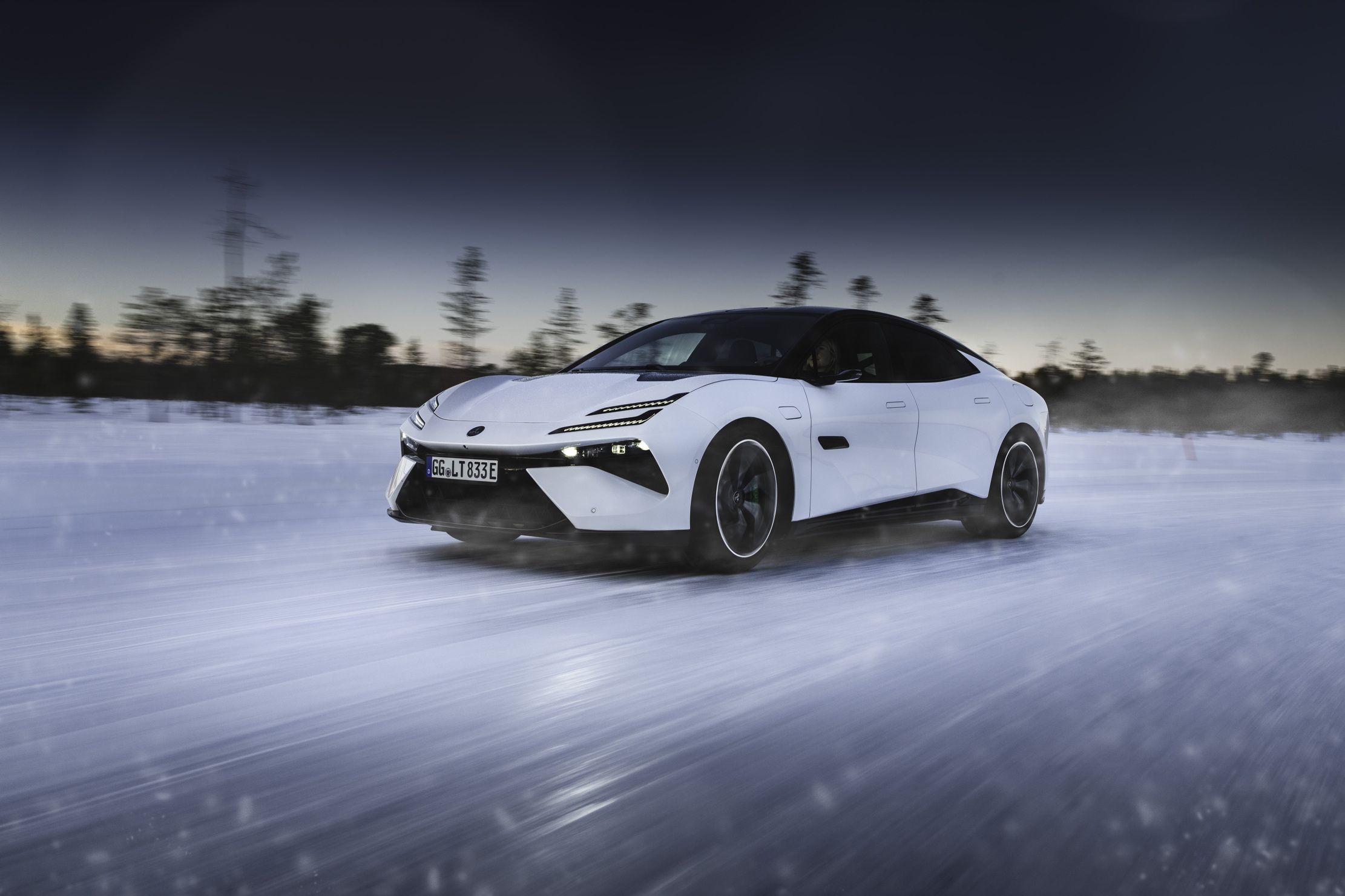
But it’s clear that Lotus, and its owners Geely, want to move on from a small niche British brand to global luxury manufacturing. The first step in that process was the large-and-fast Eletre SUV. The most recent part of the plan is the four-door ‘hyper-GT’ Emeya; I was a big fan of the Eletre, and I am a bigger fan of the Emeya.
If we are to head into the new world of electric cars, perhaps it’s time we take that baton and run with it, rather than resist. Where better to start running than with looks. The Emeya resembles an electric car from the future, with lots of big vents, slitted headlights, and an imposing road presence due to both its width (a pinch over 2 metres) and length (5.1 metres). Add on a short bonnet and a wheelbase more than 3 metres long. It looks fast, it has big wheels, and the essence of the thing is very very exotic, a far cry from manufacturers who are taking traditional styles and trying to hide battery packs in them where they can find room.
As a result, the car comes together on the road, not just in how it looks, but how it drives. Lotus produces two models : the 600 (which is plenty) and the 900 (which is absolutely loads). Those numbers align to the BHP produced, meaning that whatever you go for, it will be fast. The 600 (as tested) can hit 62mph in 4.2 seconds, while the 900 can get there in 2.8.
But the car is not just fast in a straight line, as it handles the A and B roads of Britain with aplomb. The steering is sharp and responsive, and the car as a whole feels supremely balanced and sporty when you want it to be. It has four-wheel drive. It has air suspension. The grip is sensational, and if it all gets a little frightening, the vast brakes will stop you on a dime. The only issue with driving the Emeya like the small British sportscar that it wants to be is that it is not small. But that Chapman-esque soul is there, albeit housed in a much larger body.
Exquisite houses, the beauty of Nature, and how to get the most from your life, straight to your inbox.

But this is also a GT car, which means it is supposed to be driven for long distances. That means it needs a comfortable interior, a not-too-firm ride, and decent range. Flick the car from Sport mode into Tour mode, and it becomes a louche motorway cruiser, with delightful air suspension and an interior cabin that is about as far away from Lotuses of old as I am from the Moon.
Such is the level of comfort and the usability of the tech inside that the Emeya could easily pass as just a comfortable cruising saloon, regardless of its sportier intentions. There’s also just enough luxury here — a very quiet ride, lovely diamond-cut knobs and dials, and an excellent 15-speaker KEF hi-fi system.
Props to Lotus too for configuring an infotainment system that is among the most usable in the market. It is very easy to turn-off the all-too-intrusive ADAS systems, and it takes no time at all to figure out where each menu leads and how to get where you want. Combine it all with a vast central screen and the cabin is a divine place to waft through mile after mile of British countryside.
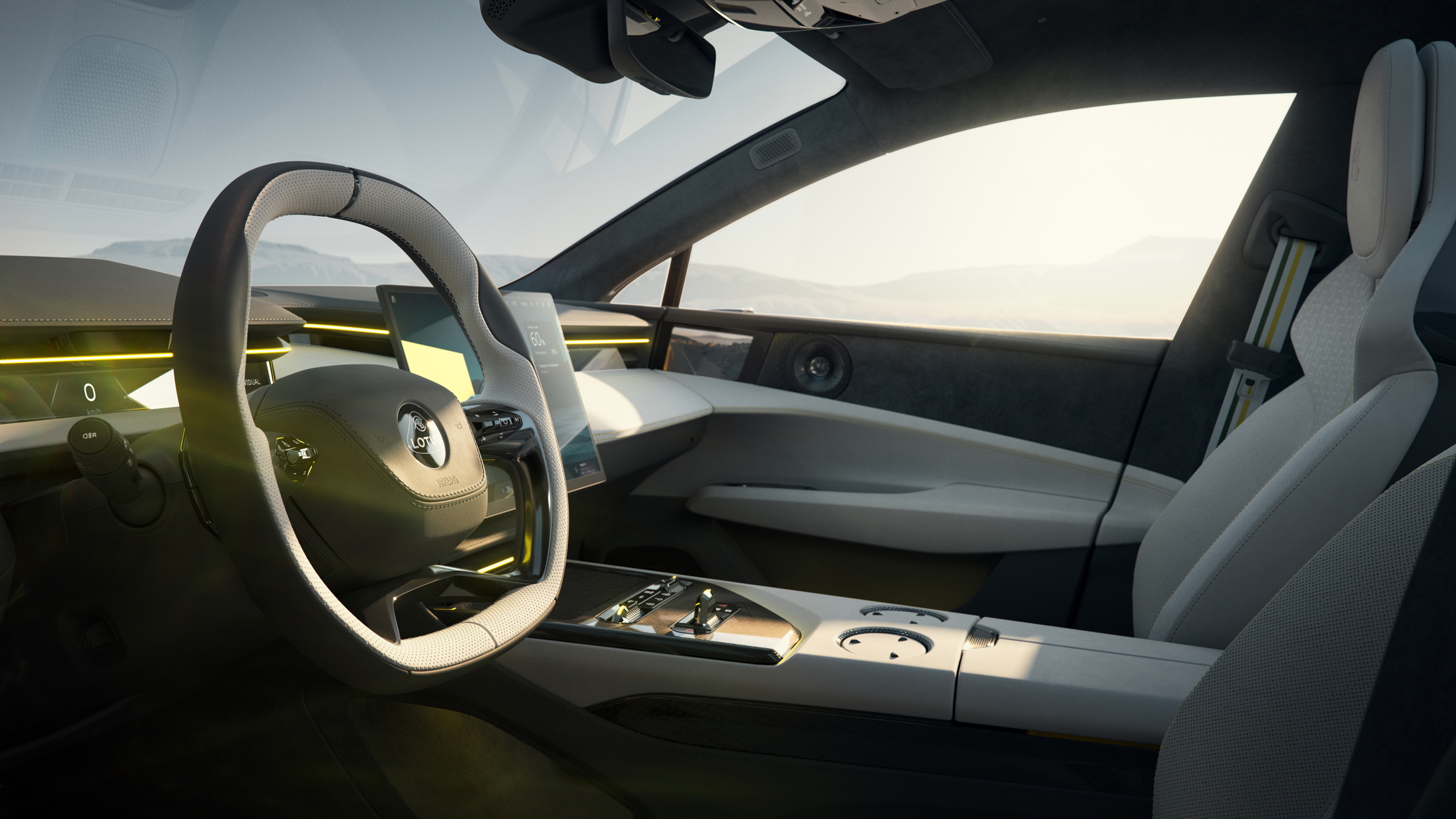
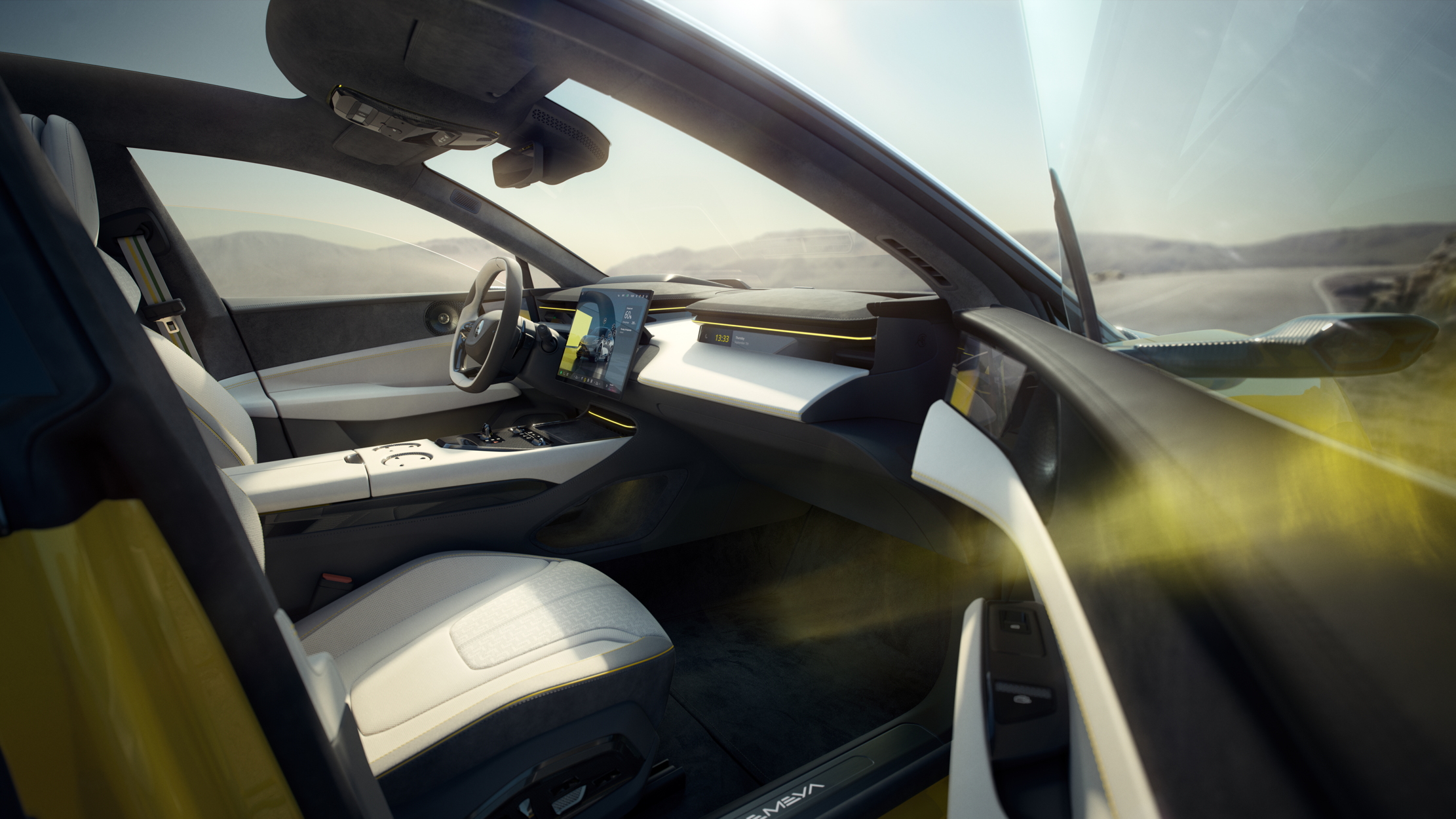
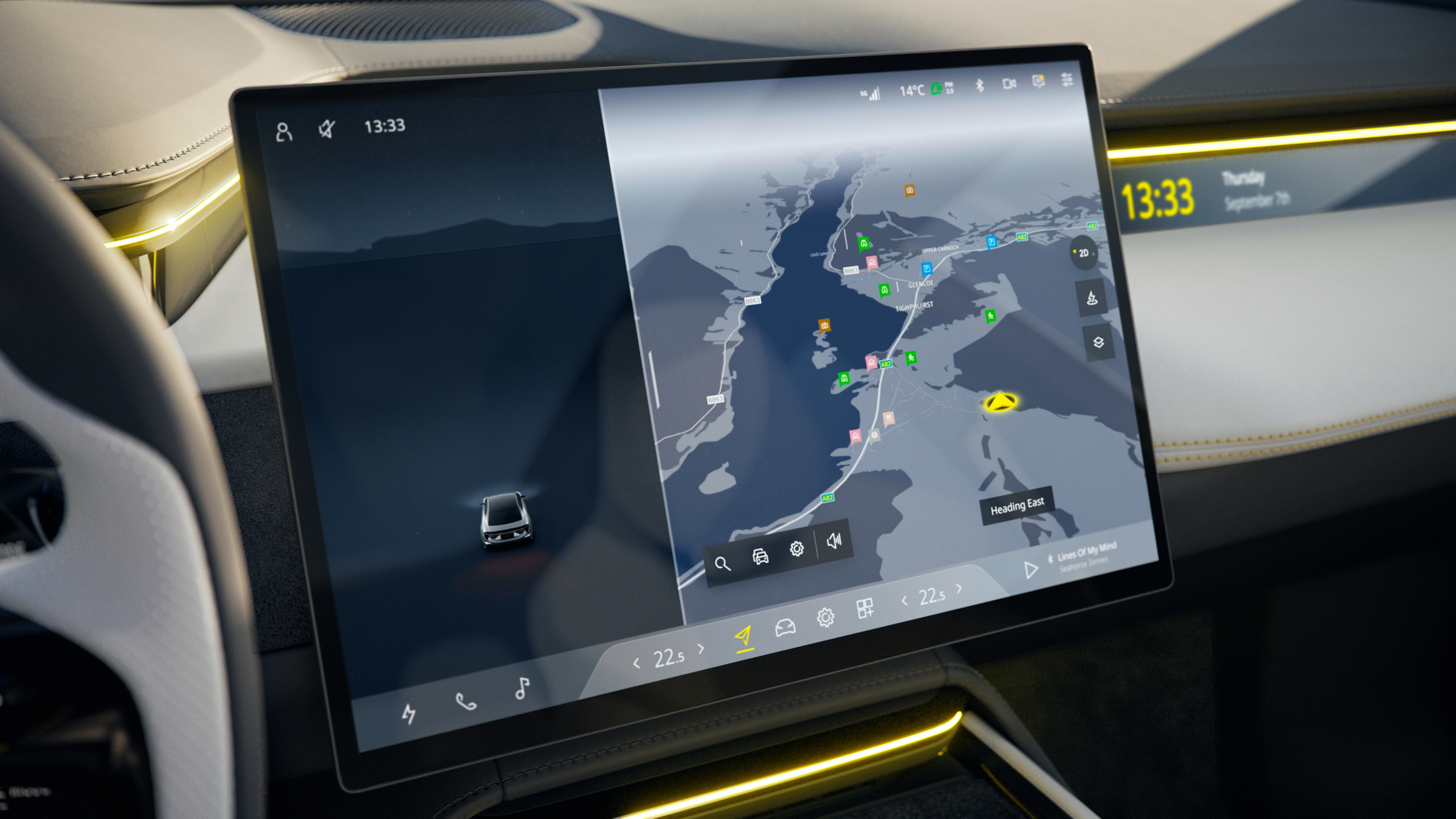
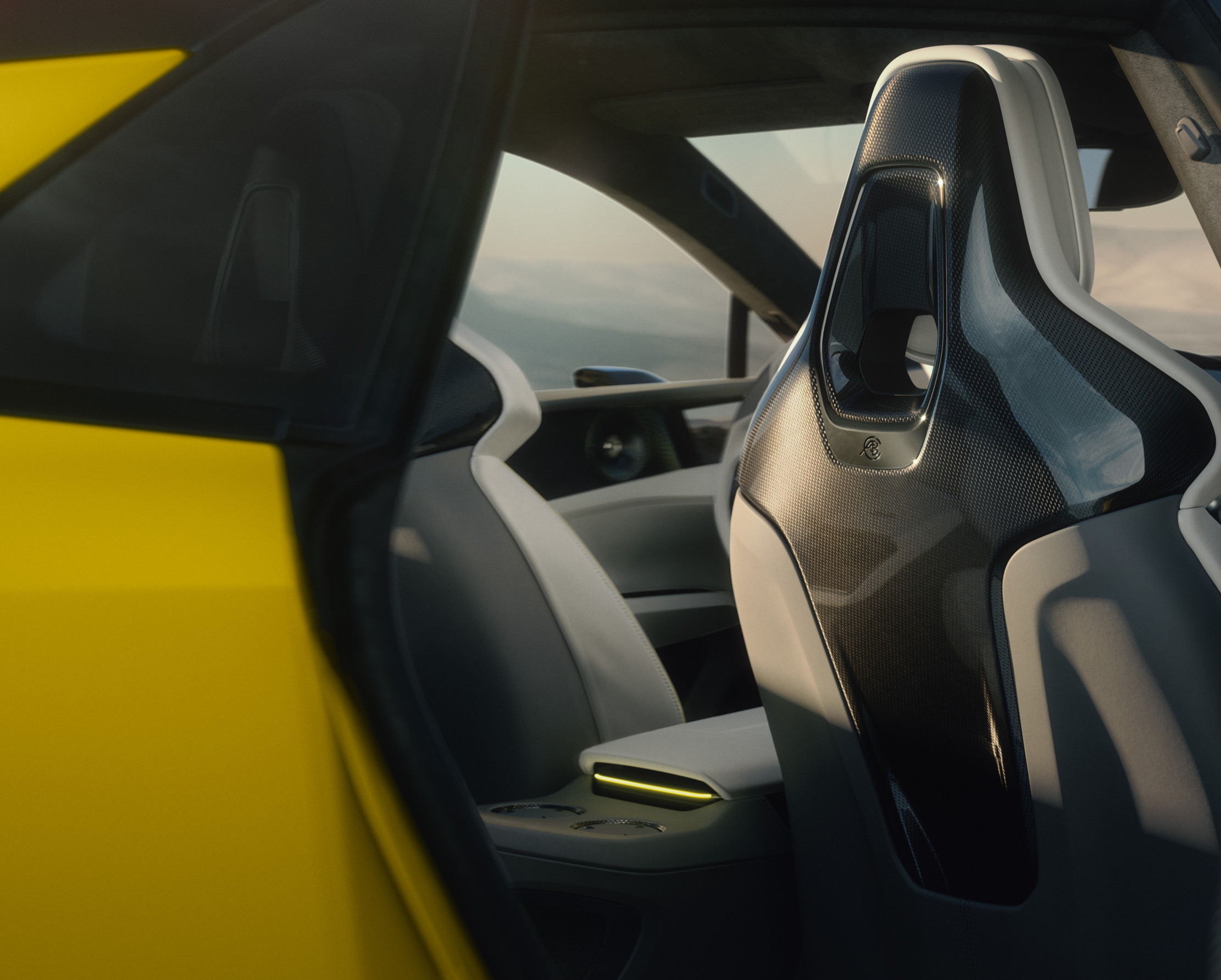
Perhaps the greatest feature of the Emeya is that it is so usable. It is comfortable. It has a surprisingly big boot. You can travel great distances in it, surrounded by luxury. There is no doubt that the Emeya is a very good car, and it is certainly the best EV that I have driven.
The accusation from those who drink beer that is brown and flat will always be that electric cars lack soul. They might be right, but the Emeya is as close to a soulful beast as has so far been produced. I suppose a lot depends on what soul actually means? To most, it would be the sound of the engine, the endearing faults and quirks of a mechanical being.
The Emeya doesn’t really have any of those things (at least that I could find). It’s not a car for the purist, nor is it likely a design to have ever crossed the mind of Chapman. But it is a very fine car, one for the modern age that we will have to accept one way or another. If this is the future, then perhaps there is not too much to worry about.
On the road: Lotus Emeya 600
Top speed: 155mph
Power: 603hp
0–62mph: 4.8 seconds
Range: 310–379 miles
Price: from £86,300

James Fisher is the Digital Commissioning Editor of Country Life. He writes about motoring, travel and things that upset him. He lives in London. He wants to publish good stories, so you should email him.
-
 Bare roots: How to find the perfect rose and how to plant it
Bare roots: How to find the perfect rose and how to plant itTabi Jackson Gee moved to a cottage in Wiltshire, and went about finding the perfect rose to bring light and colour to the garden.
-
 Flying backwards, pink milk, and holding your breath. A Country Life quiz of animal facts
Flying backwards, pink milk, and holding your breath. A Country Life quiz of animal factsDo you know the difference between a bobbit worm and a mantis shrimp? You will soon.
-
 ‘I 100% always knew that I was going to do something creative’: Petra Palumbo on her design house, love of Scotland and consuming passions
‘I 100% always knew that I was going to do something creative’: Petra Palumbo on her design house, love of Scotland and consuming passionsThe London ‘It Girl’ turned Scotland-based designer makes tiles with men’s torsos and Henry hoovers on them, has a pug called Raisin and is married to the 16th Lord Lovat Simon Fraser. She chats to Lotte Brundle.
-
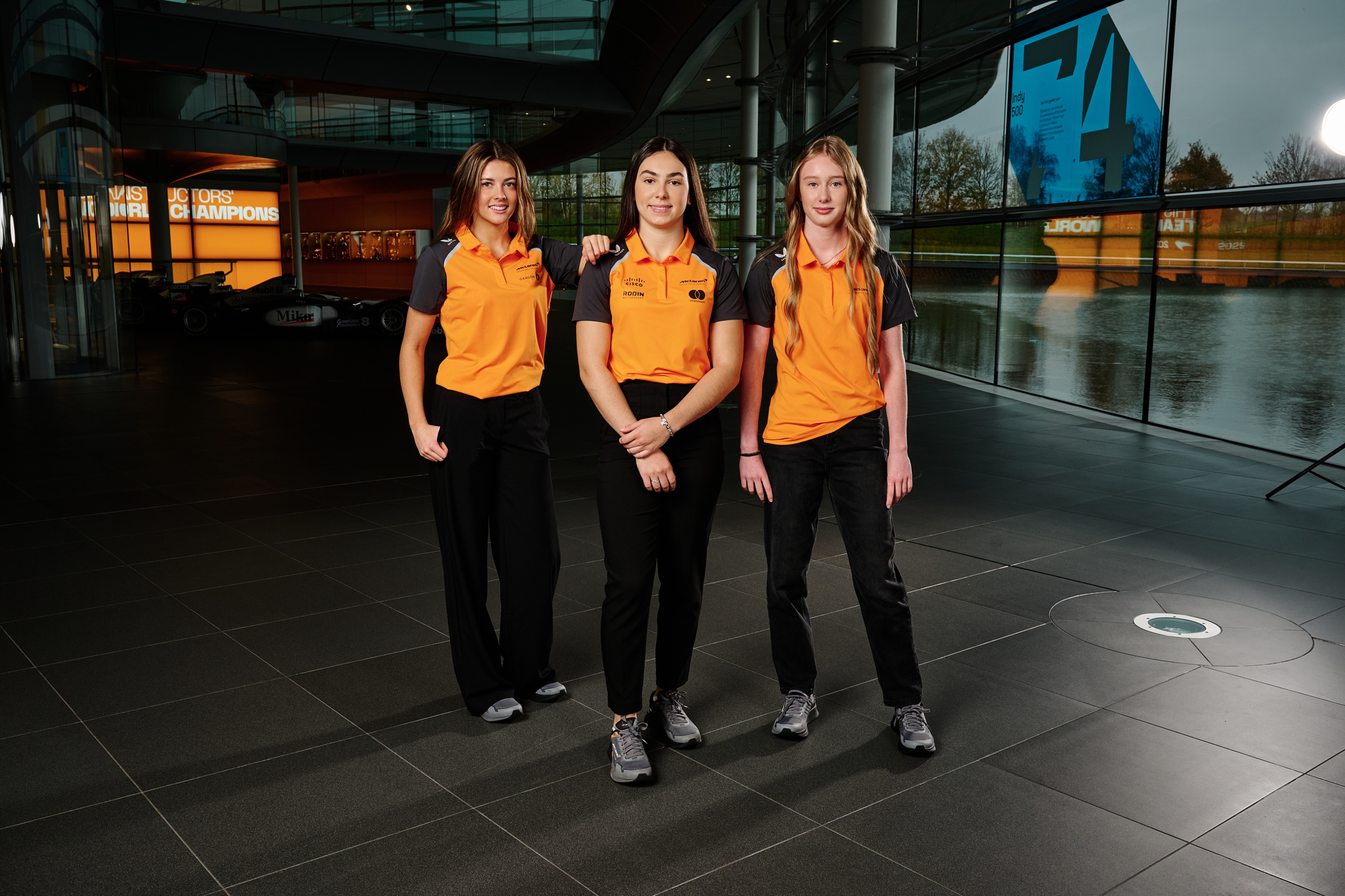 McLaren's three Ellas and the future of motorsport
McLaren's three Ellas and the future of motorsportMcLaren is rewiring the pipeline for women, on track and across the motorsport landscape
-
 The real deal: Can you tell the difference between mined and synthetic diamonds?
The real deal: Can you tell the difference between mined and synthetic diamonds?And would you buy a watch studded with laboratory-made ones?
-
 The wine stash of one of Switzerland’s most secretive billionaires is up for auction
The wine stash of one of Switzerland’s most secretive billionaires is up for auctionA selection from the personal cellar of the late Jörg G. Bucherer is for sale via Sotheby’s. Highlights include double magnums of Petrus, a case of Lafleur 1990, nine cases of Clos de Tart and six 12-bottle cases of Domaine Leroy.
-
 Who won the rivalry between Turner and Constable? It was us, the public
Who won the rivalry between Turner and Constable? It was us, the publicA forthcoming exhibition at Tate Britain that revives the rivalry between these two 19th century painters sheds new light on their relationship.
-
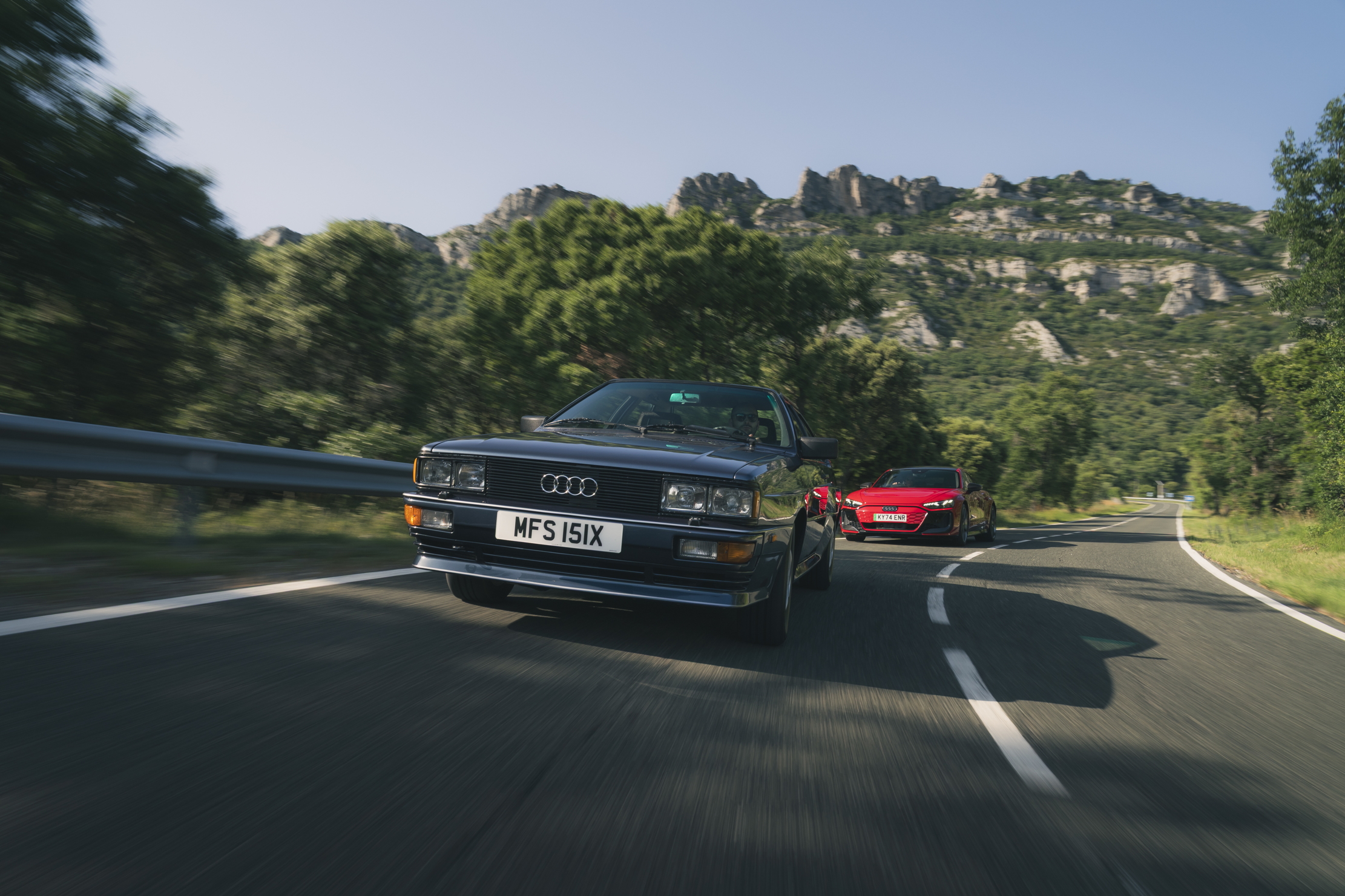 Audi has been designing icons for 60 years. Here are some of the best
Audi has been designing icons for 60 years. Here are some of the bestFrom the first Quattro, to the TT and the R8, Audi has always been able to turn a head. Adam Hay-Nicholls, our man in Rioja, explains why.
-
 Haute dogs: How fashion’s finest would dress 11 dogs and one very spoilt cat if only they had the chance
Haute dogs: How fashion’s finest would dress 11 dogs and one very spoilt cat if only they had the chanceWe’ve matched some much-loved breeds to the designers that share their history, temperament and vibe — because why not. Illustrations by Tug Rice.
-
 'Love, desire, faith, passion, intimacy, God, spiritual consciousness, curiosity and adventure': The world of Stanley Spencer, a very English visionary
'Love, desire, faith, passion, intimacy, God, spiritual consciousness, curiosity and adventure': The world of Stanley Spencer, a very English visionaryStanley Spencer’s talent for seeing the spiritual in the everyday, his stirring sense for the wonder of Nature and his love for the landscapes of Berkshire and Suffolk shaped his art, as Matthew Dennison reveals.